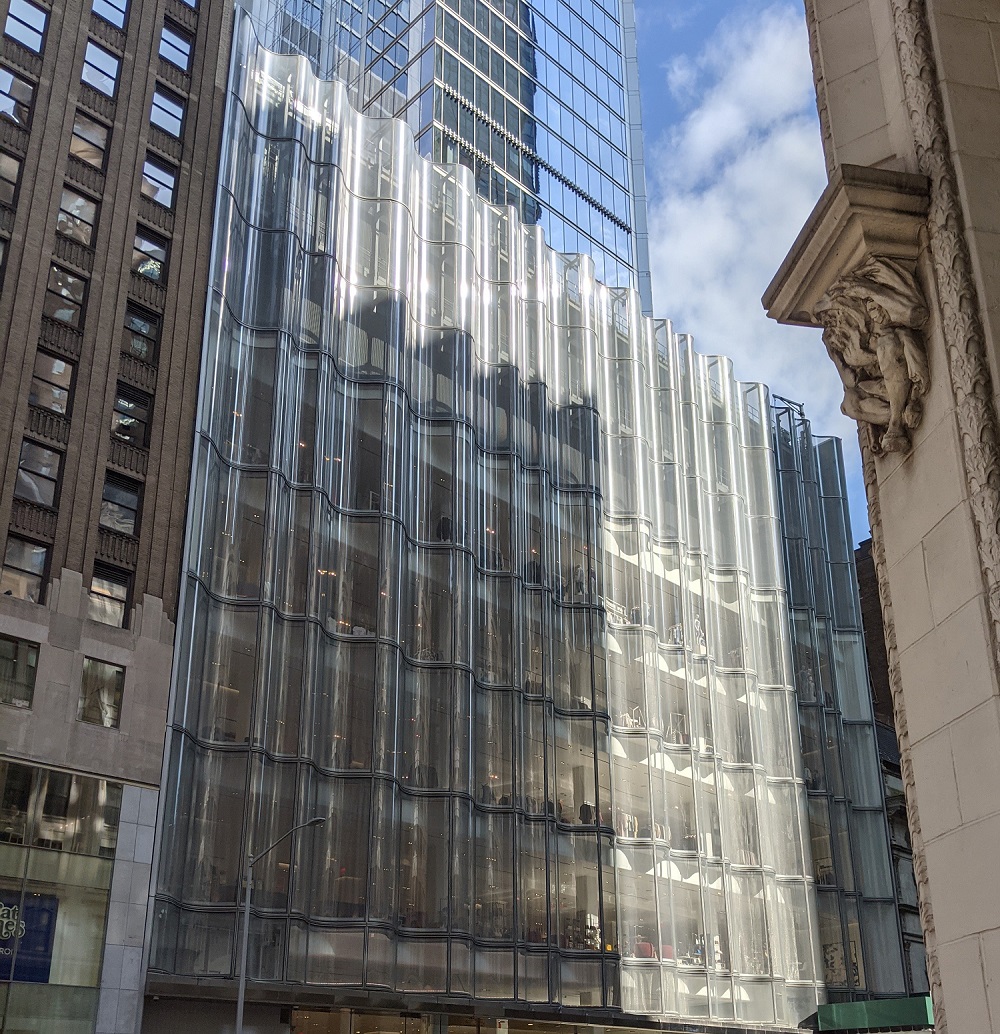Designing with Cast and Heat-Formed Decorative Glass
An excerpt of NGA's AIA-approved presentation

The National Glass Association is an approved AIA Provider and, thanks to the involvement of its volunteer members, has nine approved industry-consensus presentations available. Members may use these presentations when contacting architects and other interested parties. More architect resources are available on glass.org. The following is an excerpt from one of the presentations.
Heat-formed decorative glass
Heat-formed glass, sometimes referred to as heat-sculpted glass, is a category of decorative glass in which the pattern or design is incorporated through softening or melting of the glass using high heat. Once the final form is achieved, the glass is cooled. Heat-formed glass is available in various designs and different colors, thicknesses and textures ranging from standard to custom. These products can be used in many interior and exterior applications and are often used in public art installations.
Textured decorative glass diffracts and reflects light. The depth and shape of the textures created change the way light enters the building, allowing daylight into a space while managing glare and direct sunlight.
Safety glazing
Safety glazing may be required in certain circumstances, such as shower enclosures, interior partitions and doors. In these cases, the decorative glass can be laminated or include a surface-applied safety film tested and certified to safety glazing standards.
Slumped glass
Slumped or “kiln-formed” glass is produced by placing float glass into a kiln over a mold having the desired shape or pattern and heating to the temperature where the glass softens and “slumps” to the form of the mold. The formed glass is then annealed and can be further processed or fabricated. Each glass panel is produced individually, allowing each piece to be unique or for an artistic pattern to be carried through the entire installation. When specifying slumped glass, be aware that variation can occur in the pattern and thickness of the glass, and deep texture may limit the ability to heat treat the glass.
Cast glass
Cast glass is made by either pouring or blowing molten glass into a mold. As the glass goes through a long, slow cooling process, it hardens and takes the shape and texture of the mold. Typical applications for cast glass are glass block, glass tile, lighting and fixtures, sink bowls, architectural accents and public art installations. Cast glass allows for artistic expression in very small batches.
Fused glass
Fused glass is created by melting in a kiln and fusing together two or more types and colors of glass. Not all glass types can be successfully fused. Each type and color of glass has a “coefficient of expansion,” which is the amount and rate at which the glass expands as it is heated and contracts as it cools. To fuse glass, each piece should have a similar coefficient of expansion to avoid cracking during the heating or cooling process. When specifying fused glass in an installation, ensure that the glass can be manufactured in the sizes you require. Fused glass is typically made in smaller sizes than more traditional architectural glass. Sometimes, the opening may need to be divided into sections to accommodate smaller glass lites. Some designs with large variations in thickness may not be able to be heat treated.
Bent/curved glass
Bent or curved glass is flat glass that has been formed into a curved shape or profile using high heat and a mold or frame. It is used for both functional and decorative purposes and can be heat treated, further fabricated into laminated or insulating glazing units, and may incorporate a variety of other decorative features. Bent glass can be used in applications such as railings and balustrades, windows, furniture, revolving entrances, shower and bath enclosures, display cases, and architectural facades.
There are a few issues to consider when specifying bent or curved glass. Bent glass can be made into many simple or complex shapes; however, all manufacturers will have a minimum and maximum radius that they can produce. Also, due to the heating process, there may be some optical distortion in bent glass, but modern technology has reduced this significantly.
Rolled cast glass
Also known as patterned, textured or obscure glass, rolled cast glass has been imprinted with a texture or pattern at high temperatures while still in a molten or malleable state. Unlike slumped or kiln-cast glass, patterned glass is made directly from a mix of raw materials rather than already manufactured glass. It is offered in large sheet sizes in various patterns, and can be cut and fabricated. Most patterns are directional, meaning the pattern runs in one direction. When considering sheet size, the direction of the pattern should also be considered. Some patterned glass can be heat-treated or laminated.
Channel glass
Channel glass is a structural glass system that creates light-transmitting walls for interior or exterior applications such as curtain walls, storefronts and rain screens. A series of U-shaped cast glass channels is installed into a perimeter frame that allows glass openings to be formed into arcs, serpentine walls, and columns or tower designs. To specify a channel glass system, select the appropriate framing system, select the desired glass texture combination and determine the glass performance requirements such as wind load, thermal and safety requirements.

